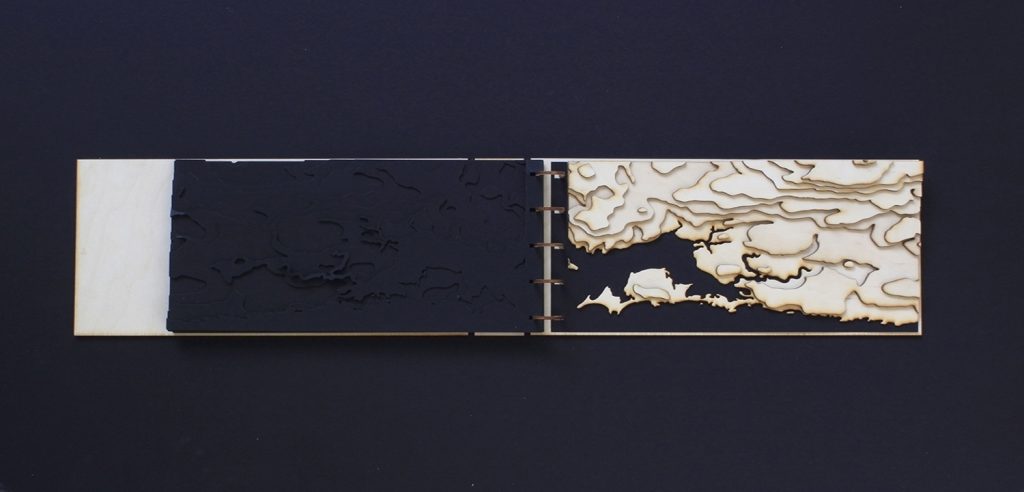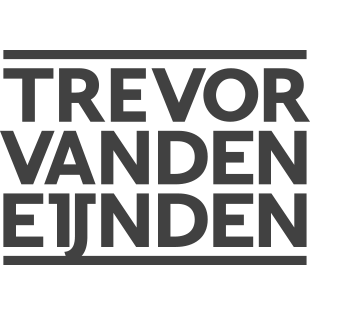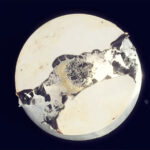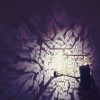
shored-lines
Based off of NASA ocean-level predictive models archived during the 45th presidency in the United States of America, shored-lines is a series of laser cut birch and black paper bookworks that renders difficult to fathom flash points of global ocean level rises and puts them into the readers hands.
ABOVE
shored lines: waterside
Trevor Van den Eijnden
2015
Laser-cut birch, paper, wood-based glue, wax
30.1 x 17.5 x 3.8 cm (11.8 x 6.9 x 1.5 inches), 60 pages
From sham–real shadows; text by Trevor Van den Eijnden
“Pushing home into the personal, shored lines explores the idea of baseline shifts more directly then in previously discussed work. Among the many concepts J. B. Mackinnon’s discusses in The Once and Future World, shifting baselines is one of great importance for my practice. (Mackinnon). Perceptions of imperceptible changes are found within In the Grass 8:54, but instead of slowing down time, this sculptural work speeds time up. This series of book–sculptures provide an abstract phenomenological experience via a signifier for knowledge that brings into focus the worth of what we will lose. The first iteration of the work, Shored Lines: Waterside, focuses on the Northumberland shore of Pictou County, Nova Scotia, with the co-ordinates of my childhood home just inside the bottom left corner. Consisting of a five-ring binder made entirely of laser-cut paper and birch, with tension and wood glue to hold it all together, it features a topographical map with laser-cut black pages that when “read” slowly drown the topography. This project focuses on subjective personal knowledge of a place, not merely the space in which it exists. However, it is important that the work hints at a map without borders, without demarcations of longitude or latitude, thus permitting the viewer to contemplate the world(s) that extend far beyond what is presented. The phenomenological experience arises from the untold stories of the places not shown that surround and extend far beyond the space depicted: Waterside Beach Provincial Park.
If we go beyond this park, and if we approach the world as an infinite space for present and future places, then shifting baselines and shifting shorelines must be seen as a learning opportunity to look at the world as an actual embodied, and lived experience containing an infinite number of places. Only then can this “strange stranger” (nature) be understood, and this “adventure’s eve” be optimistic. The future looks grim, but work such as Shored Lines should be seen as only one of many possible dystopic or utopic, or even simultaneous places.”




